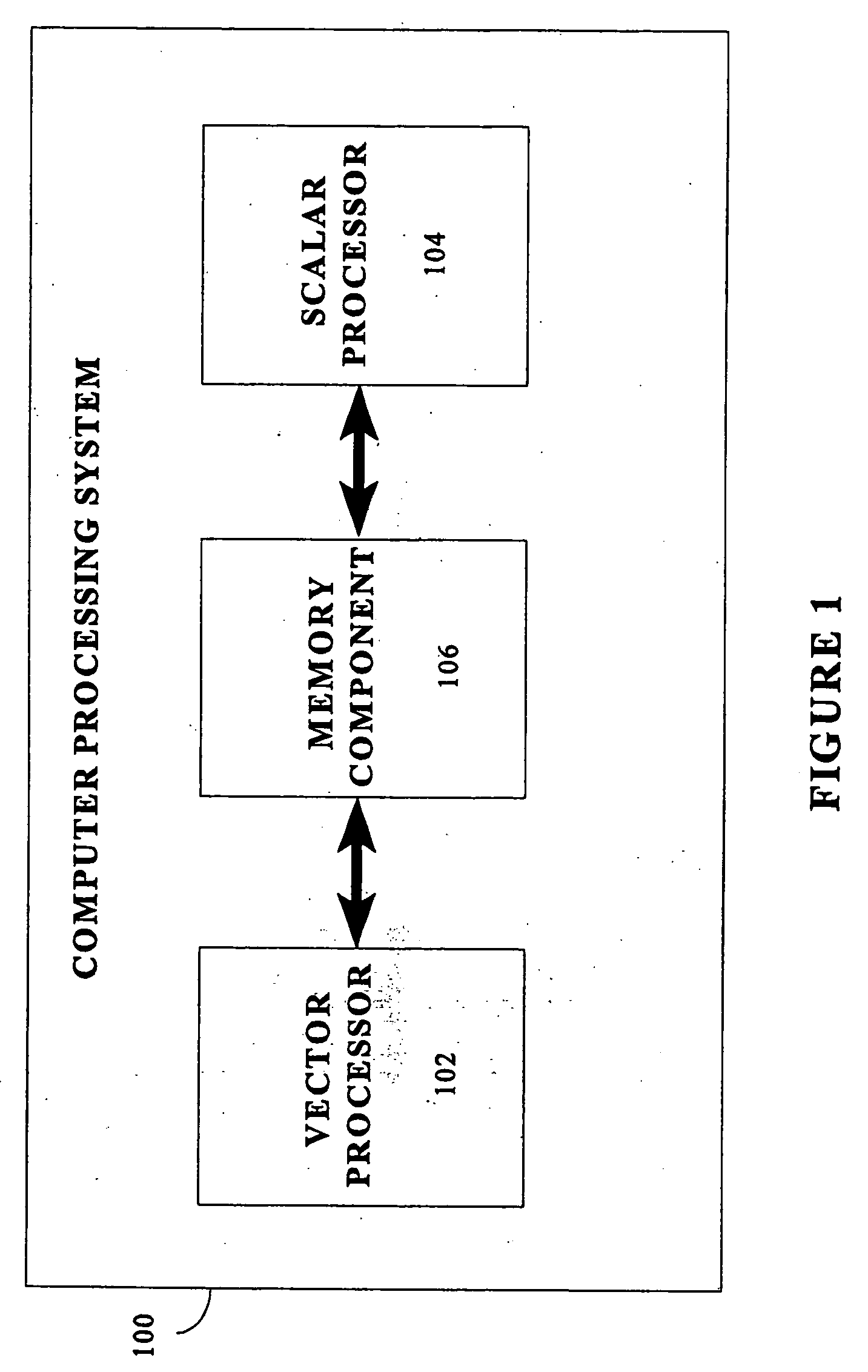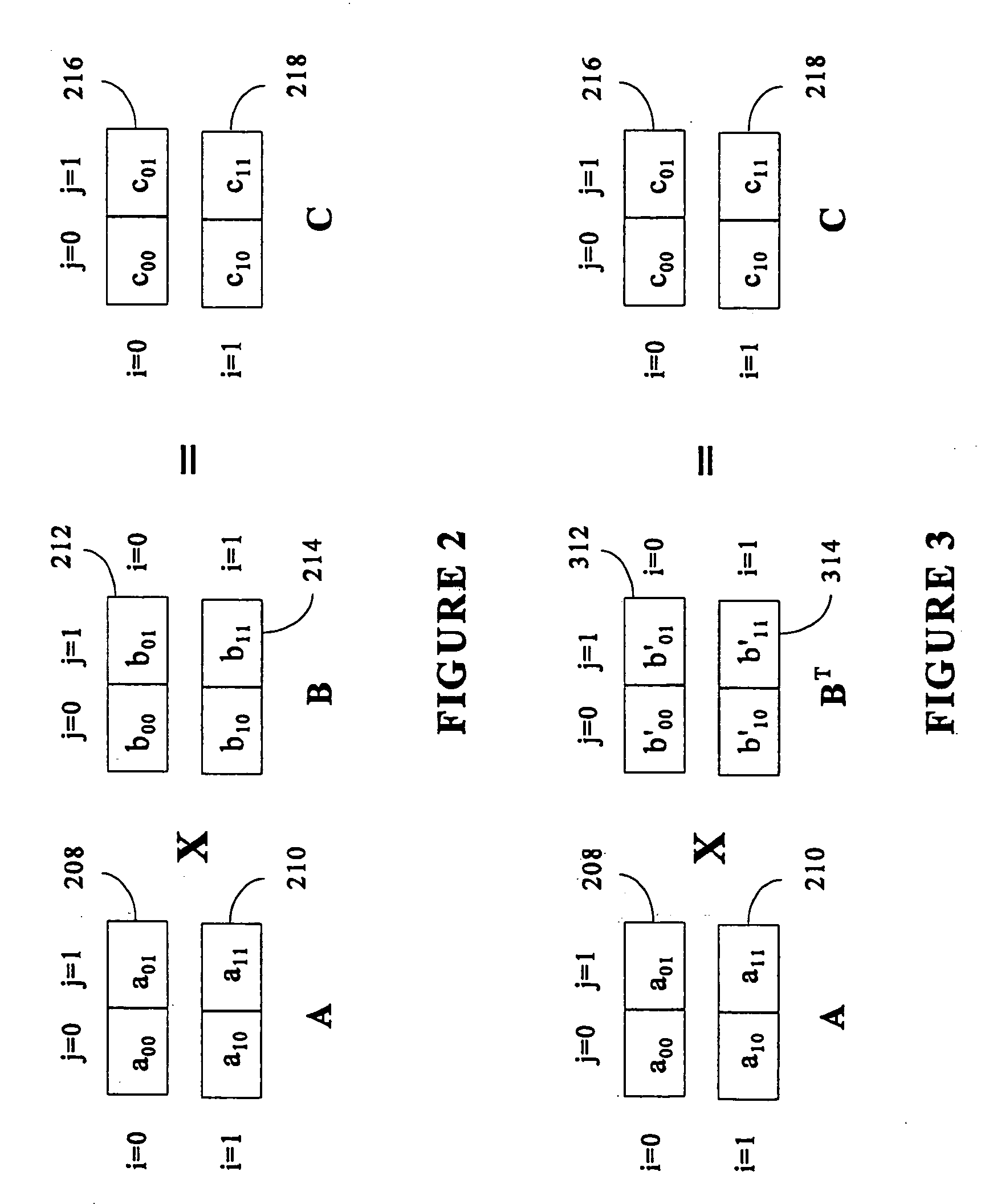Matrix multiplication in a vector processing system
a vector processing system and matrix multiplication technology, applied in the field of matrix multiplication in the vector processing system, can solve the problems of loss of output quality, time-consuming computation of matrix multiplication operations, and the transposition of one of the matrixes being multiplied, so as to achieve efficient and rapid matrix multiplication
- Summary
- Abstract
- Description
- Claims
- Application Information
AI Technical Summary
Benefits of technology
Problems solved by technology
Method used
Image
Examples
Embodiment Construction
[0029] In the following description, for the purpose of explanation and not limitation, certain details are set forth, such as particular techniques, steps, and system components in order to provide a thorough understanding of the present invention. However, it will be apparent to those skilled in the art that the present invention may be practiced in other embodiments that depart from these details. In some instances, specific detailed descriptions of well-known concepts and methods have been omitted so as not to obscure the description of the present invention. The present invention can find utility in a variety of computer configurations, as will become apparent from an understanding of the principles which underscore the invention.
[0030] An exemplary computer processing system of the type in which the present invention can be employed is illustrated in block diagram form in FIG. 1. The structure of the processing system itself does not form part of the present invention. It is ...
PUM
 Login to View More
Login to View More Abstract
Description
Claims
Application Information
 Login to View More
Login to View More - R&D
- Intellectual Property
- Life Sciences
- Materials
- Tech Scout
- Unparalleled Data Quality
- Higher Quality Content
- 60% Fewer Hallucinations
Browse by: Latest US Patents, China's latest patents, Technical Efficacy Thesaurus, Application Domain, Technology Topic, Popular Technical Reports.
© 2025 PatSnap. All rights reserved.Legal|Privacy policy|Modern Slavery Act Transparency Statement|Sitemap|About US| Contact US: help@patsnap.com



